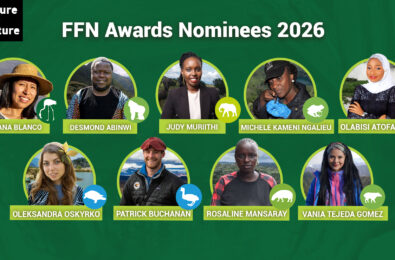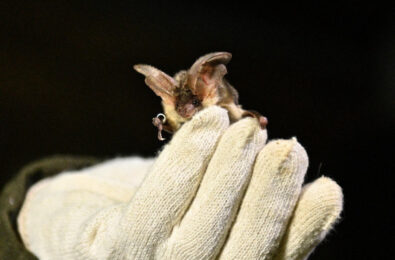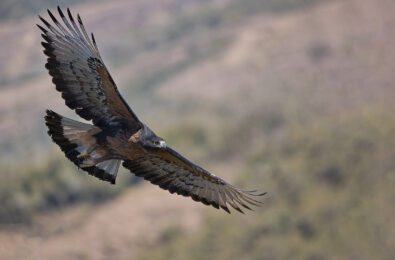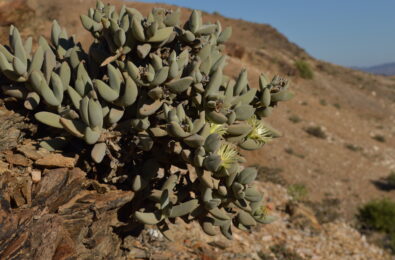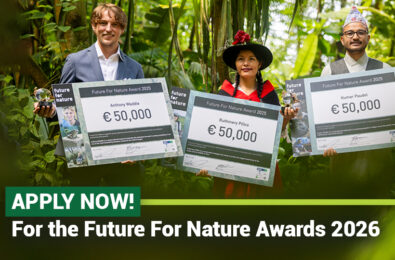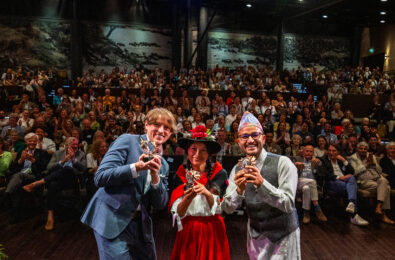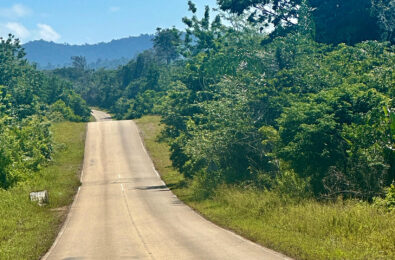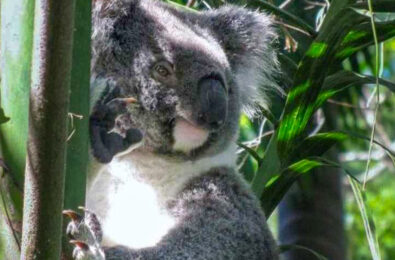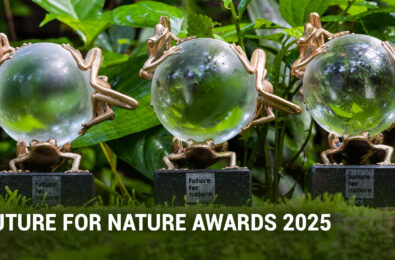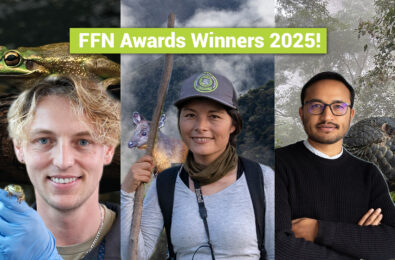Future For Nature Award Event 2018
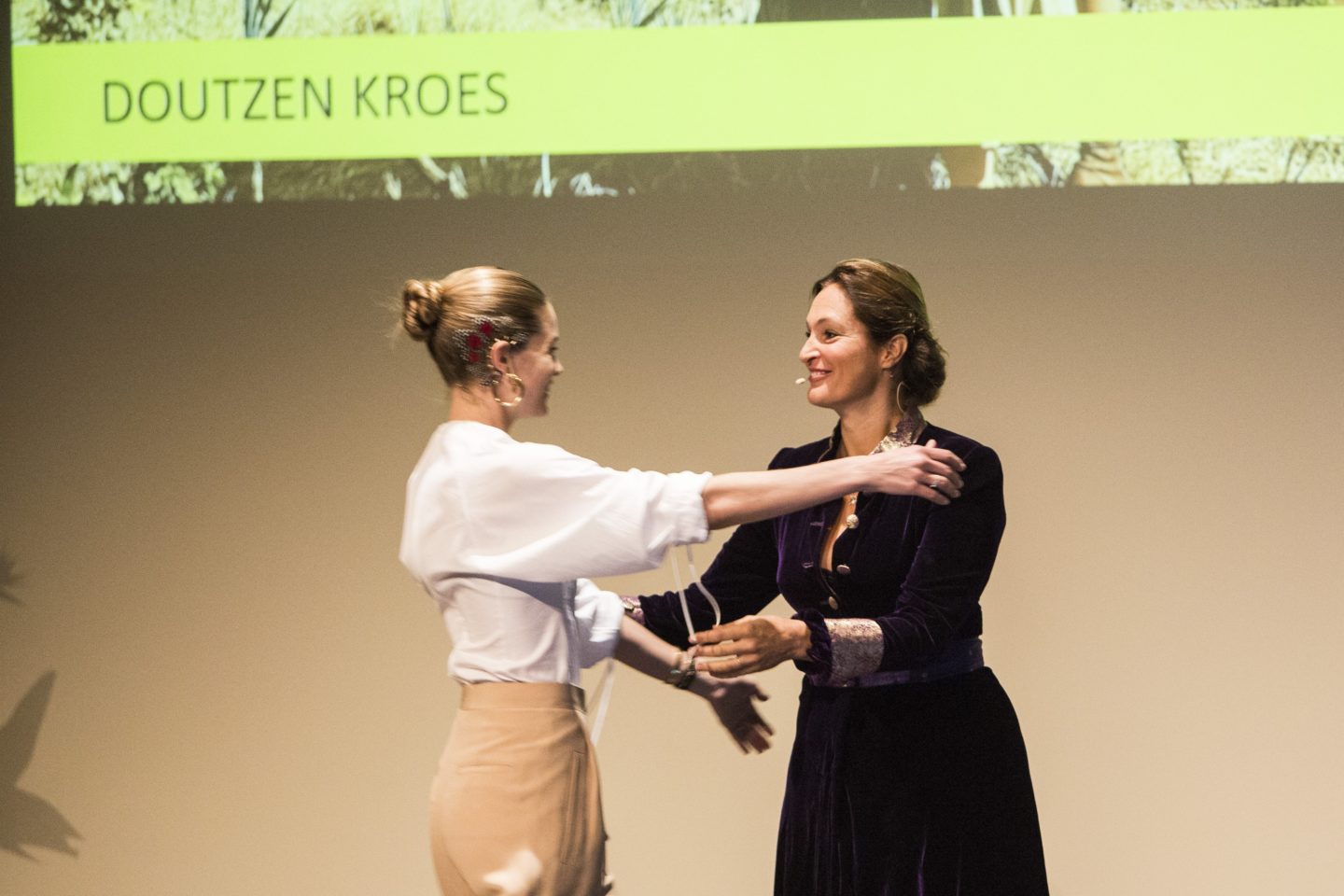
Award Show 2018
It was a gorgeous day in Burgers’ Zoo, Arnhem!
After spending days rehearsing their speeches, and also having some fun at the Open Air museum, visiting the zoo and inspiring many young minds at the Future For Nature Academy Day, the winners were ready for the big day! The auditorium was filled with roughly 500 people, all immensely interested in the speeches of this year’s FFN winners! Amongst the crowd were previous FFN winner Wietse van der Werf, International Selection Committee members Masha Vorontsova and Vivek Menon, ambassador Freek Vonk, many board members, and of course the always gracious host Saba Douglas-Hamilton and the extraordinary supermodel and activist Doutzen Kroes. Via a livestream on Facebook, former FFN winners, family and friends, and wildlife enthusiasts, followed the beautiful event!
Saba welcomed all the guests, and explained the importance of the Future For Nature award, and its faith in young, passionate, energized and inspiring conservationists who are working tirelessly to change the world.
“Every year, the enormous alliance is growing and that gives me enormous strength and hope, because when you are out there on the frontline, it can sometimes feel so lonely, so isolated. Future For Nature is becoming more and more of a family for all these people.” – Saba Douglas-Hamilton
FFN winner 2008 Patricia Medici had a video message for the audience, explaining the importance of the prize for her work in tapir conservation, and the sense of belonging to this community of winners.
When it was time to welcome the Guest of Honour on to stage, Saba got choked up about the marvellous commitment Doutzen Kroes has given to end the ivory trade and elephant poaching, and about their time together in Samburu.
Doutzen Kroes
Doutzen told us about her road into conservation, her youth in Friesland, visiting Saba in Kenya, and seeing her son mesmerised by the giant elephants on the Samburu savannah, she realised that we have to do something to save the elephants for future generations, to become the generation that looks back and says: we did it. So she started, together with Save the Elephants, the #KnotOnMyPlanet campaign and started working together with the Elephant Crisis Fund!
“Today I have the chance to listen to these amazing young champions that have achieved already so much, and I am so grateful to be a part of that, to be here today. And we should all think of how we could be the wind beneath their wings. I see all of you here and it gives me hope. Hope for a green future where we can live in harmony with the natural world, the live support system that we all depend upon, with all its fascinating diversity of live.”
“We each have a tool, that we can use to contribute. […] The young conservationists gathered here by FFN have all found their own tool and each of them is blazing a trail for us. Each of us needs to do the same. We need to find our tool, and need to find our talents, our energy to come together and be that generation that makes the difference.”
We got a special message from last year’s FFN winners, about the impact the prize had on their work, that opened many doors, gave international recognition and credibility and pushed the winners far and beyond what they thought they could do.
Geraldine Werhahn
Geraldine Werhahn started with a Himayalan wolf howl, as the lights went dim, catching everyone’s attention.
Geraldine’s pathway to conservation
Geraldine grew up in Switzerland with five dogs, who formed the perfect pack together with her. Always fascinated by canids, their intelligence, and nature, Geraldine knew that her future was in researching animals. Searching for wolves in the Himalayas, Geraldine realised that the wolves in the Himalayas might be different from the Grey Wolf. But they were extremely hard to find, since the wolf is perceived as a nuisance, and killed off. To find one, they had to go to the remotest corners of Nepal, on 5.000 meters above sea level. To get there, it took 2 domestic flights, and 7 days of walking.
“I had my conservation picture, and I had my goals, but I had no idea how to get there. How the path to each of these goals would look like. I simply embarked on my conservation journey, I took one step at a time, into the unknown, but always towards the vision on the horizon.”
Himalayan Wolves Project
Geraldine founded the Himalayan Wolves project in 2012. She spent many expeditions, with over 1.000 km of hiking, to investigate the habitat, the ecology, and the prey populations of this wolf, but also the attitudes of people towards this animal. Geraldine discovered that this wolf is genetically distinct from the Grey wolf, and probably emerged over 800.000 years ago! After hopefully given a specific spot in taxonomy by the IUCN, this wolf can be assigned a conservation status. Science can affect politics, and thanks to the work of Geraldine and her dedicated team, one of her research sites, the Humla area, is now declared as a protected area.
The genetic data has been collected, the ecology has been investigated to understand the social life, the prey and the habitat requirements of these animals. Attitudes of people have been assessed, and human-carnivore problems are being mapped. Since there are many more livestock animals, wild prey populations are pushed out of the area, which gives the wolves nothing else to eat than the people’s precious livestock.
Plans for the future
With the award, there will be long-term sustainable conservation solutions, with the initiation of community conservation groups to monitor the health of wild prey populations, and improve herding strategies. This, combined with education, will preserve this precious biodiversity of the high altitude Himalayas.
“My personal vision for nature conservation is a world where non-human animals and human animals are beautifully interlinked in the web of life.”
“I dedicate this prize to my mother, it is her who has taught me to be a strong, independent woman, a woman that turns her vision into reality.”
Trang Nguyen
Growing up in Vietnam
As a young girl, Trang witnessed the immense cruelty bile bears suffer, for traditional medicine. She was immensely shocked, but at 8 years old, very determined to stop it from happening again. However, she had no idea how, and when asking her parents they told her that since she is a Vietnamese girl, conservation was not for her. She could not agree less, but found out that all the study materials were in English. Her only solution was to learn English, but it took a while before an organisation agreed to let her volunteer.
Conservation around the world
At 18, Trang was lucky enough to go to England to study wildlife conservation. This led her to Madagascar, to study lemurs, and this for her, was conservation.
Everything changed for Trang when she was diagnosed with cancer, and the doctor in England told her that there was no way for her to go back into the forest. It came as a shock, and she had to find a new life plan.
When she was on her hospital bed, and the doctor saw her reading a report on illegal trade of rhino horn for traditional medicine he told her about the dangers for patients of using these medicines instead of modern treatments. Trang realised that wildlife conservation is not just about saving wild animals, but about saving human lives in the long term as well. Trang founded WildAct for young Vietnamese people, that wanted to get into conservation, but like her, had difficulties finding a way how.
Wildlife trafficking and raising awareness
Trang moved to Cambodia and started a program on the illegal trade of elephant ivory. Cambodia is a big hub for illegal wildlife crime and products, and Trang realised after working there for three years, that many of these shops are also aided by government officials. To try and halt this, one had to tackle it from the consumer side as well. In many Asian countries, the use of Chinese medicine with wildlife products is very normal, and people are open to using it. Trang wants to create a masters wildlife course for Vietnamese people in combination with university, to give young Vietnamese a chance to learn about wildlife conservation, like she wanted to.
“I understand that in order to tackle the illegal wildlife trade, making people aware of it, is not enough. We have to get them involved, empower them, and give the knowledge in how to stop the wildlife trade.”
“I believe that there is a wildlife conservationist within everyone of us.”
“Wildlife trafficking is not the problem of the Chinese, or the Vietnamese, or the Asians, or the Africans, this is a problem for all of us. I ask you all here today to join hands with us, to support our work, and to be a part of the solution, to make sure, that there will be a future for nature.”
Adam Miller
Growing up looking at the skies Adam Miller grew up in Missouri, in the US an was always fascinated by birds. For him, they were the ultimate symbol of freedom. To get closer to these amazing creatures, Adam volunteered at his local pet shop where he first met the mystical songbirds. Falling instantaneously in love with them, he wanted to find out everything. This finally led him to Indonesia, where he co-founded Planet Indonesia, a wonderful organisation that focusses on people as much as it does on wild species, in Kalimantan.
The lost song of Indonesian forests
Every year in Indonesia, over 1 million songbirds are taken from their forest homes, put into cages and sold in markets. Keeping songbirds is deeply rooted in Indonesian culture, and birdsong competitions are a very popular past time activity. There is a Javanese saying that goes:
“In order to become a man you must have 5 things: a horse, a house, a wife, a dagger and a songbird.”
Adam showed us footage of the short documentary ‘Tainted Love’, for which his organisation provided many of the images.
“We often refer to these birds as cut flowers, just like a beautiful flower that is cut from its roots and quickly wields and dies, most of these songbirds stolen from their forest homes, they don’t last more than 1-2 weeks in captivity.”
Conservation as a lifestyle
Adam wanted to find out why people keep on capturing these songbirds, and quickly found out that many of the poachers and traders do this to provide for their families. He realised that pointing fingers is simply useless, and that there is a need for improvement, both of the forest and of people’s livelihoods. “At Planet Indonesia we conserve at risk ecosystems and species through village-led partnerships. We work to decrease socio-economic inequalities at the grassroot level through increasing conservation practices”. Through business investments and training, education in literacy for women and youth, and health services, Adam is successfully improving the livelihoods of the Kalimantan communities, who in return help to conserve the forest and stop their poaching actions. Moreover, Adam collaborates with the Indonesian government to get birds out of the supply chain, and get them back in the forest home.
“I believe in conservation that builds trust and creates optimism, that improves the lives of those directly involved in safe-guarding biodiversity. I believe in conservation that does not need to be the enemy of the wildlife trader, it does not need to be the enemy of the wildlife poacher, or of the indigenous community, or of the law enforcement agency, if it is done correctly.”
“We can all be conservationists, from the indigenous community living in the corner of the Bornean rainforest, to you all in your daily lives. Nature is for all of us, and therefore it is all of our responsibility to protect and restore it.”






